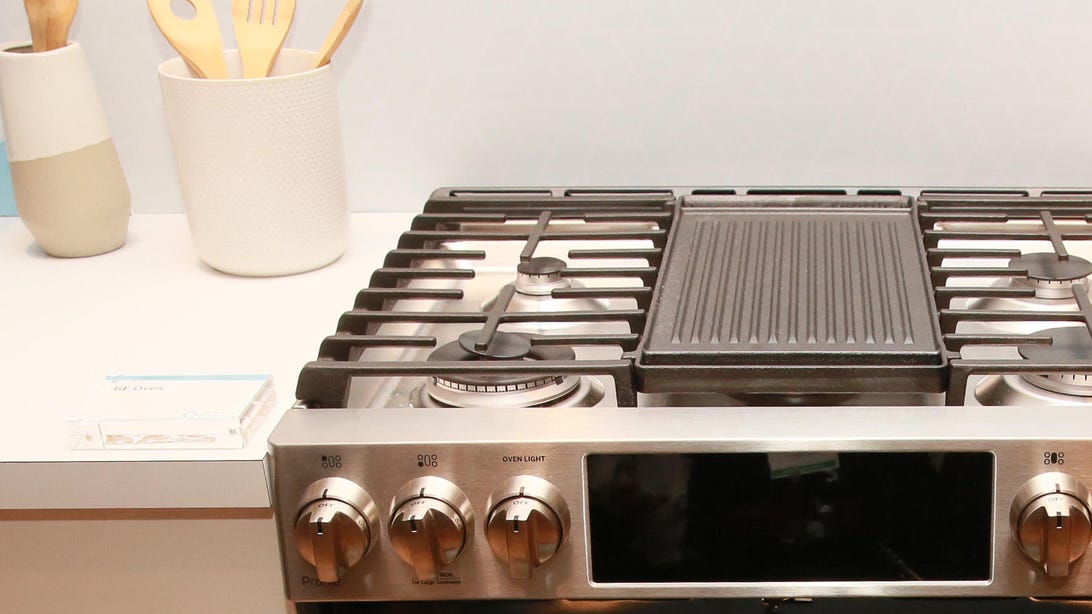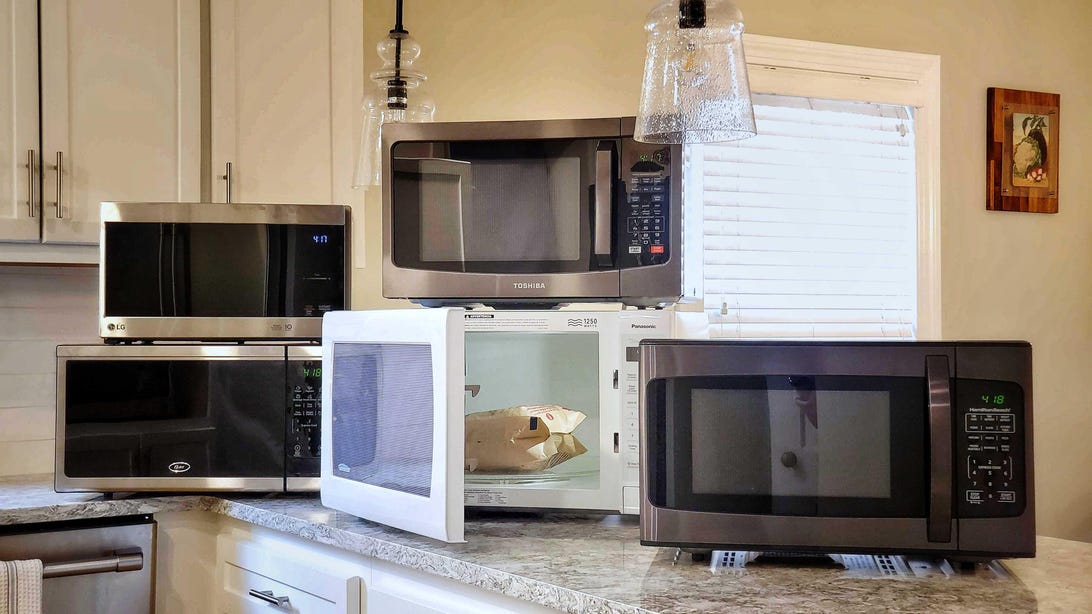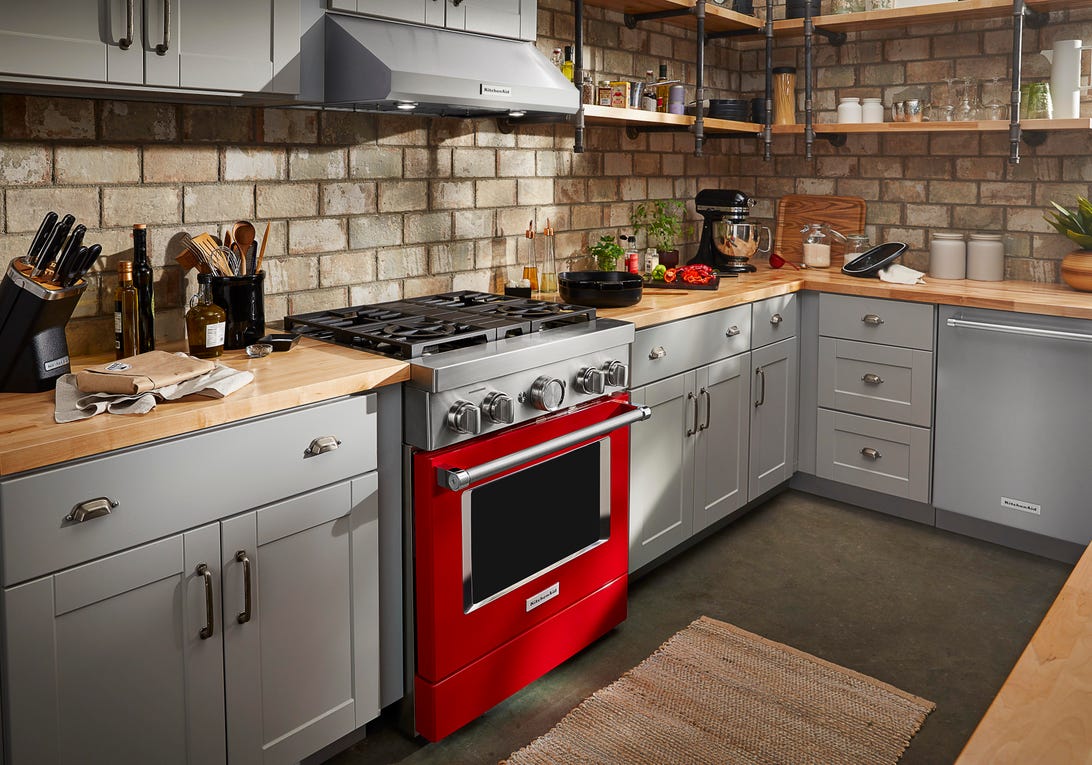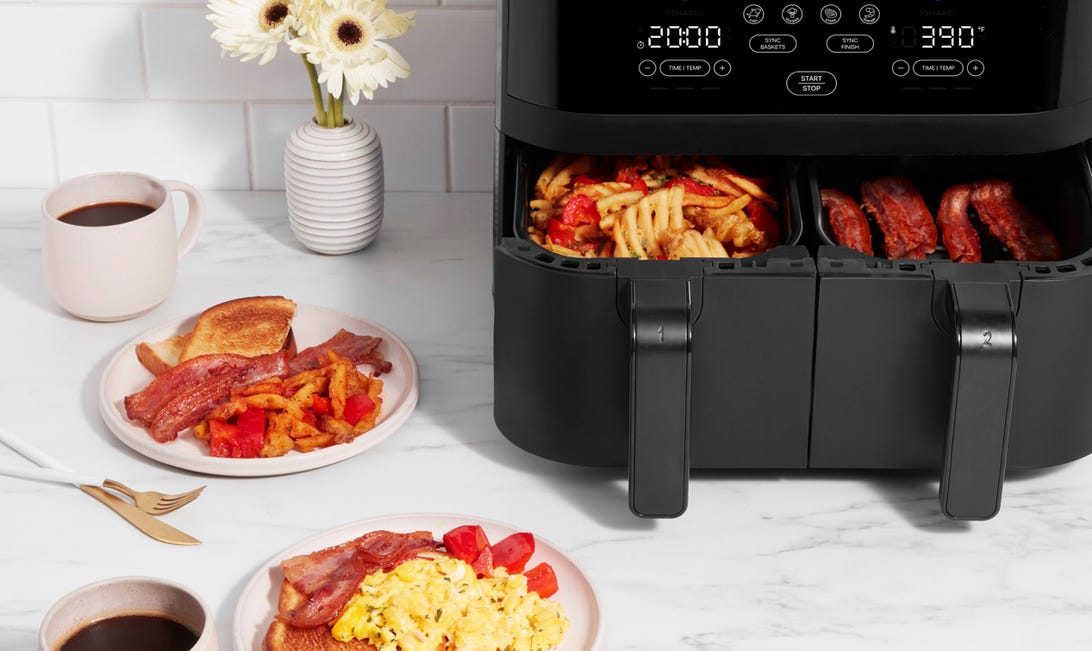
If you’re looking for ways to save money around mealtime, the quickest fix is probably curbing that takeout habit. Once you’ve committed to cooking, there are even more granular ways to cut costs, including using your most energy-efficient appliances.
I recently calculated the cost of running a full-size oven compared to an air fryer. It turns out, the trendy air fryer oven could save you up to $130 on your yearly energy bill since it uses significantly less energy pull than either a gas or electric oven. (It’ll also save you time since air fryers both preheat and cook faster than most large ovens.)
This time, I’m calculating the energy it takes to run a microwave and how that compares to the energy cost of a full-sized oven. While a microwave can really only do a fraction of what an oven can, you still might be able to sub it in for certain cooking tasks and trim next month’s electricity or natural gas bill. Here’s exactly how much energy the average microwave uses and how much you could save by using it instead of an oven or stove.
Microwave vs. large oven
| Microwave | Gas oven | Electric oven | |
| Average energy draw per hour | 1,200 watts | 7,000 BTUs | 3,000 watts |
| Cost per hour | $0.20 | $0.40 | $0.51 |
| Cost per year (100 hours cooking) | $74 | $146 | $182 |
Much like the air fryer, the microwave proves to be a very extremely energy-efficient way to cook, made even more so when you consider how quickly it cooks. You can certainly save money on your energy bill if you find ways to use your microwave instead of the large oven.
Here’s how I got these figures.


Microwaves can’t do everything but they can save you some money on your energy bill.
Molly Price/CNETHow much does a microwave cost to run?
Microwaves run solely on electricity and a standard microwave requires about 1,200 watts. Larger and more powerful microwaves may pull slightly more energy than this rate while smaller microwaves generally use a bit less. If you were to use your microwave for 15 minutes every day, that would break down to 300 watts per day or .3 kWh. In New York, where I live, a kWh is roughly 17 cents so your daily cost would be about 5 cents. Multiply that by 365 and you get a rough yearly total.
To run your microwave for 15 minutes every day uses roughly 109.5 kWh and in New York state would cost you about $18.60 a year. If you used it for an hour each day, it would cost about $74 for a year.
Read more: I’m Loving This $98 Microwave That’s Also an Air Fryer


Large ovens may be versatile but they pull loads more energy than smaller ovens.
KitchenAidHow much does a gas stove cost to run?
To calculate the operating cost of your gas stove, we take the energy rating of the oven in Btu and divide it by 100,000. Multiply the result by the cost per therm of natural gas in your state (varies by state), then multiply by the projected number of hours it is used.
To calculate the operating cost of an 18,000-Btu oven, for instance, you’ll divide 18,000 by 100,000, giving you 0.18. We’ll also need to find the average price per therm of natural gas in your state. This chart has the most recent prices via the US Energy Information Administration. Note that this chart is listed in dollars per thousand cubic feet, so you’ll need to divide by 10. For instance, if the chart price is $23, you’ll use $2.30 to calculate the cost.
In New York, the price is currently $2.20 per therm (about average for the US). Next, we’ll multiply that price for a therm by the number you calculated in the last step (0.18 in this example) to get the operating cost per hour of using your gas oven.
For a New Yorker, it’ll cost about 40 cents per hour to run an 18,000-Btu oven. If I were to run an oven for 1 hour per day, it would cost $146 per year. In some states, including Georgia, Florida and Ohio, natural gas is about 30% higher than the national average. In Hawaii, it’s more than double.


Modern ovens are more efficient than they used to be but they can’t compare to air fryers or microwaves.
Sarah Tew/CNETHow much does an electric stove cost to run?
To find the total cost to run an electric stove you’ll calculate the wattage pulled per hour of cooking. Most electric ovens draw around 3,000 watts, a rate that varies depending on the temperature. Once you find the wattage via the appliance tag or an online product listing, multiply that by the number of hours you use the oven each day (we’ll use 1 hour for this calculation), then divide by 1,000 watts to find the kilowatt-hours, or kWh, of electricity used.
Next, find the average price per kWh of electricity in your state. For that, you can consult this chart that has the 2020 prices listed in cents per kWh. Multiply that amount by the number you just calculated (3 kWh in this example) to determine your operating cost per day.
Working with New York’s current electricity rate of 17 cents per kWh, a 3,000-watt oven would cost about 51 cents per hour when run at high heat. If I used my oven for roughly one hour per day for one year that would equal roughly $182 per year.
How much can you save using a microwave?
A microwave uses significantly less energy than either a gas or electric stove. To use your microwave for one hour every day would cost you about half the total energy of a natural gas oven and 60% less than an electric oven. Keep in mind that you very likely won’t use your microwave for an hour every day since it cooks so much faster than a standard oven.


Air fryers are still my pick for an energy-saving alternative to your large oven.
ChefmanI recommend adding an air fryer to cut energy costs
While a microwave proves to be an energy-efficient appliance, it lags far behind other ovens in terms of results. Microwaves are fine for defrosting and reheating certain frozen meals, but if you overcook food in a microwave (not hard to do) you’ll almost certainly end up with a rubbery, inedible mess.
Air fryers are another quick and energy-efficient countertop appliance that churns out markedly better results than microwaves. An Air fryer is a super convection oven that blasts food with quickly circulating air so it gets crispy on the outside without overcooking the inside. Air fryers also require almost no preheat time which means even more savings on your monthly electric spend. Here’s my complete guide to air fryers to help you decide. The best part is you can get an excellent air fryer for under $75.

